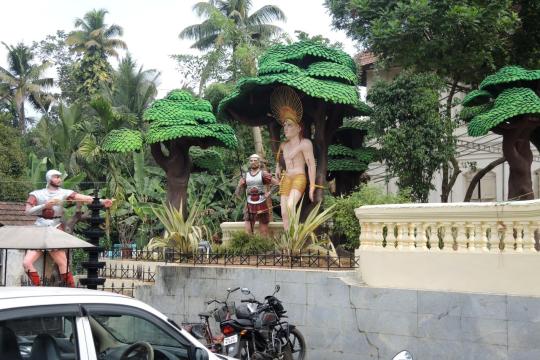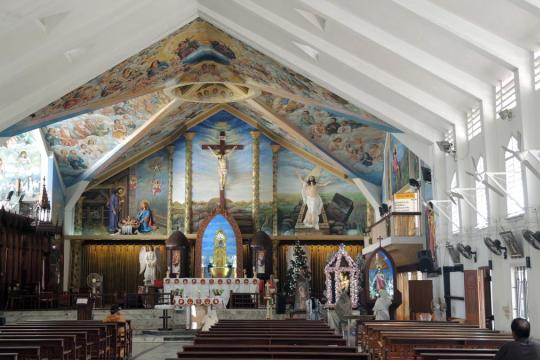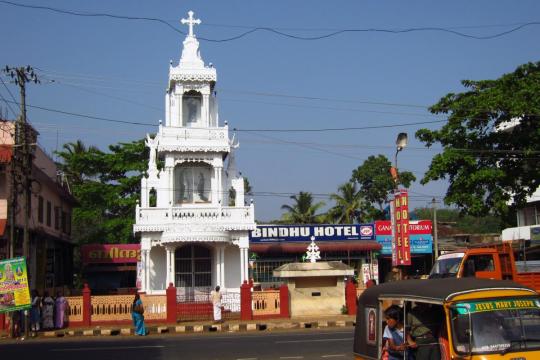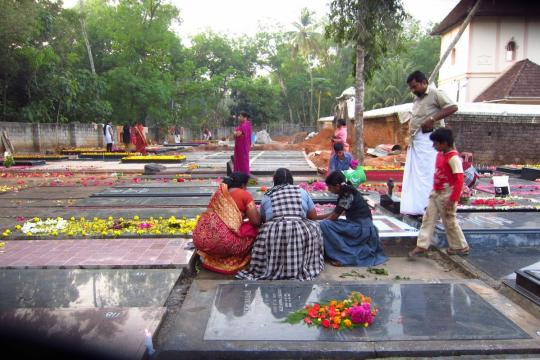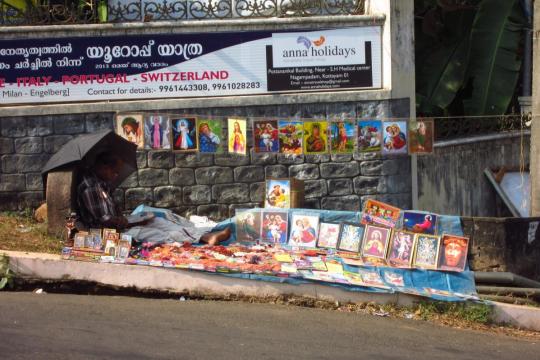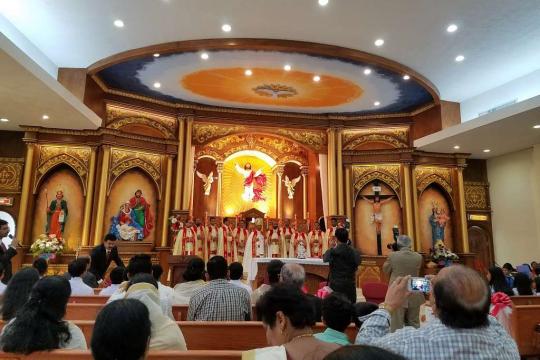-

A view up the steep steps to St. Mary's Forane Kuravilangad, at dawn.
-
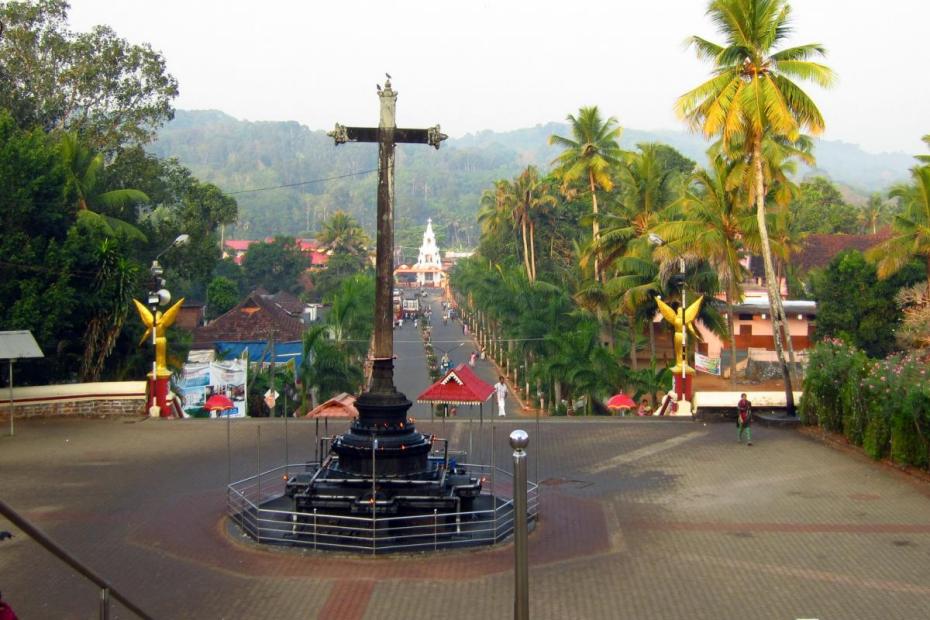
A view from the doors of St. Mary's Forane Church features a giant granite cross with an elaborate system of oil lamps surrounding its base.
-

On the women's side of St. Mary's Forane Church, worshipers leave shoes outside before entering the church for Mass.
-
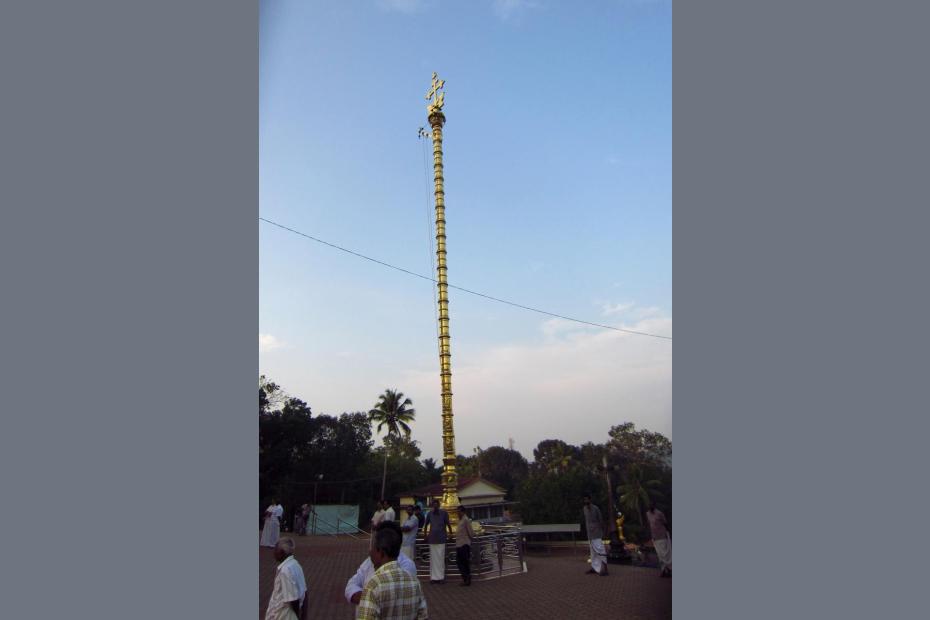
The flagpole at St. Mary's Forane Church: Special flags are raised with great ceremony and celebration to announce the annual parish feast, as at all parishes.
-

Looking past the brass flagpole to the enormous parish hall at St. Mary's Forane church, a site especially important for wedding feasts.
-
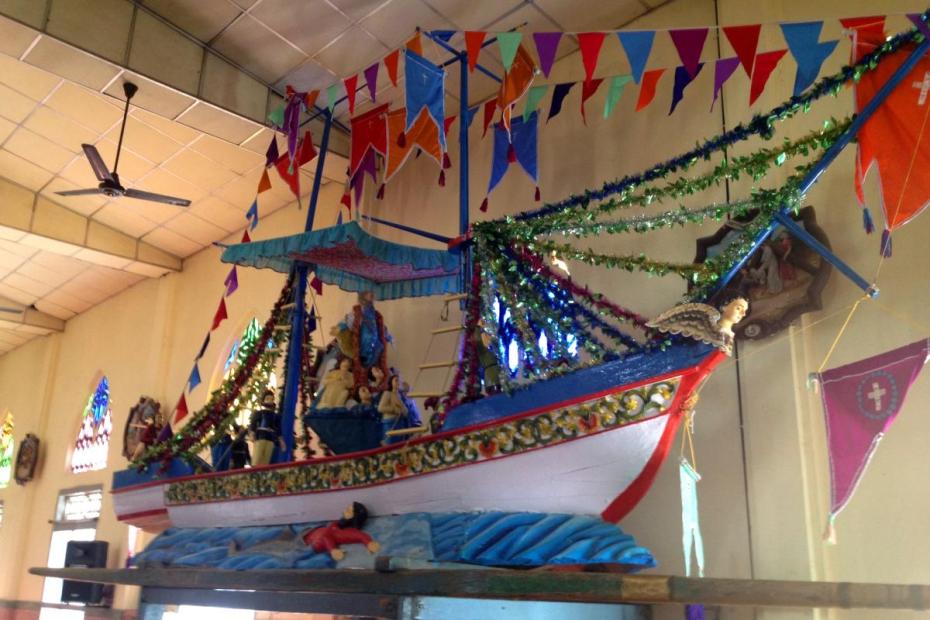
The large ship used in the celebrated Kappalottam festival at St. Mary's Forane church, commemorating the story of Jonah.
-
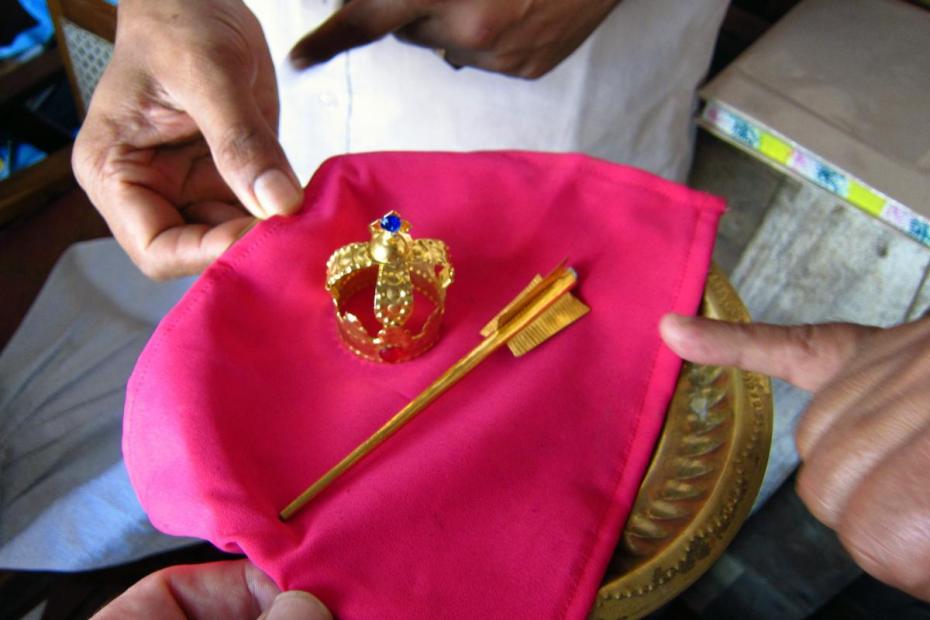
Kalunna are remembrances carried by devotees as reminders of vows to saints, or offerings for them at a feast. The arrow references St. Sebastian, a popular saint in South India and the patron for the feast at St. Mary's Forane Church.
-
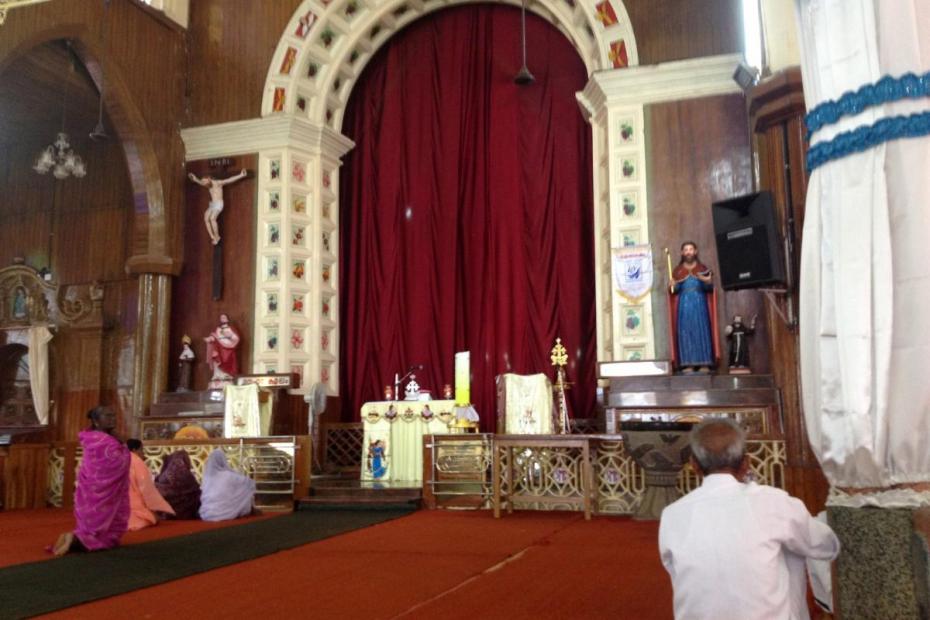
Worshipers arrive early to pray at St. Mary's Forane Church, a Syro-Malabar Church. The red drape covering the sanctuary is opened during liturgy.
-

-

Decorating tombstones with fresh flowers at St. Mary's Forane Church in the early morning before the start of the Syro-Malabar Day of the Dead procession.
-

Decorating tombstones with fresh flowers at St. Mary's Forane Church in the early morning before the start of the Syro-Malabar Day of the Dead procession.
-

Decorating tombstones with fresh flowers at St. Mary's Forane Church in the early morning before the start of the Syro-Malabar Day of the Dead procession.
-

Pouring oil over a cross is a popular form of devotion in Syro-Malabar churches.
-
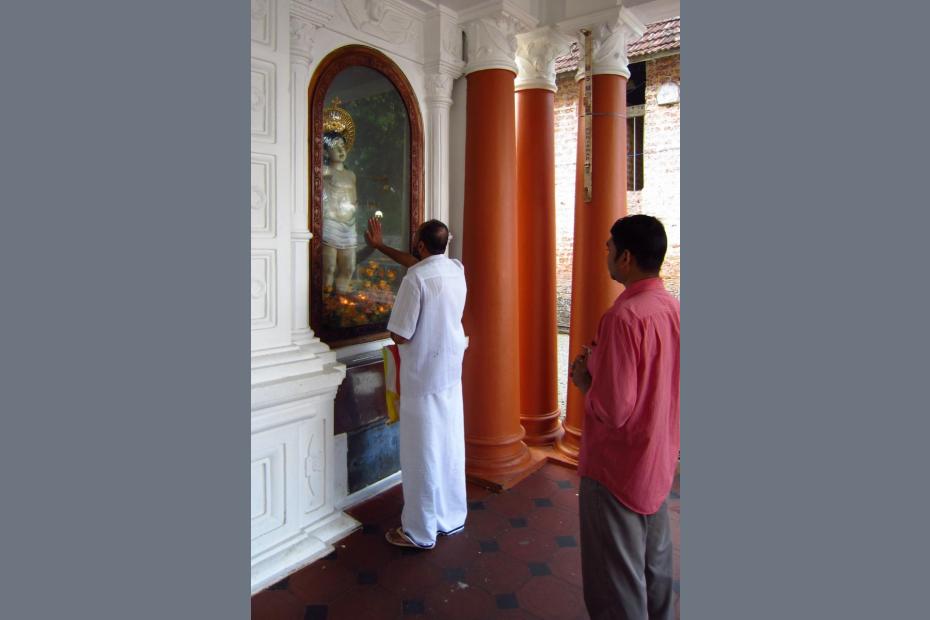
Statue of St. Sebastian, patron of the parish feast at St. Mary's Church Kuravilangad.
-
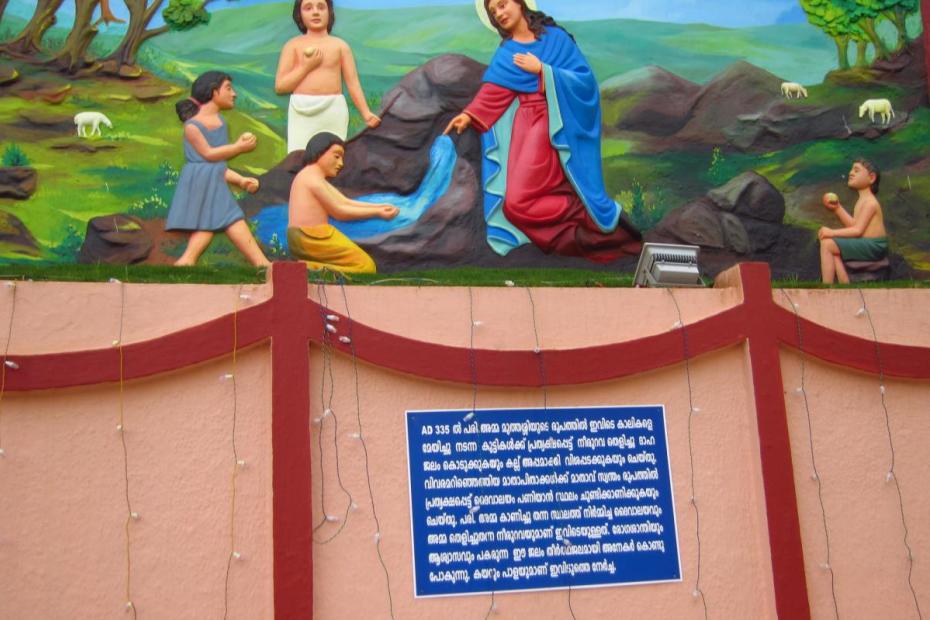
Mural of the appearance to children at the miraculous spring in 335AD. St. Mary's Forane Church, Kuravilangad
-
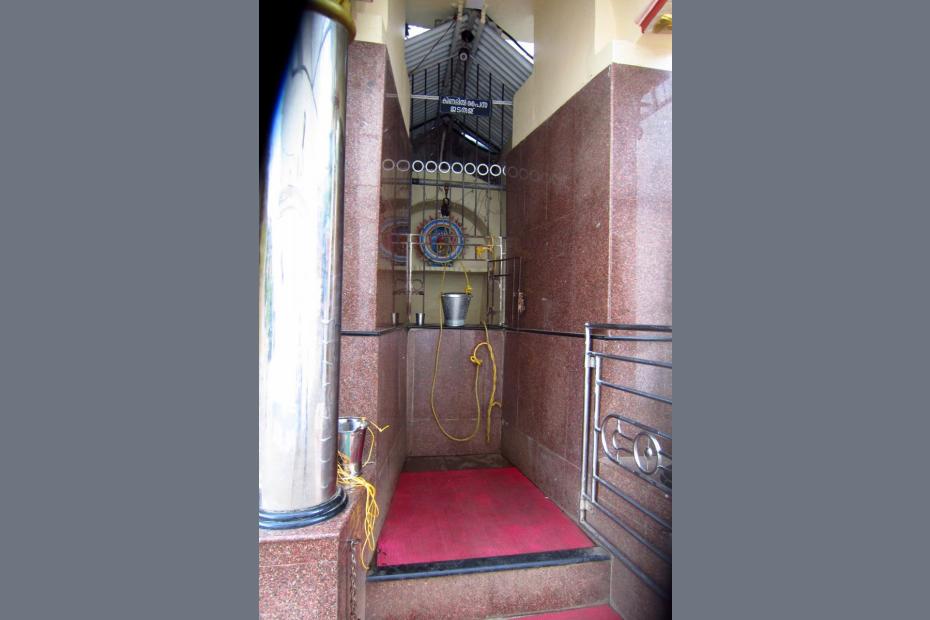
Well to draw water from the miraculous spring where the Virgin appeared.
-
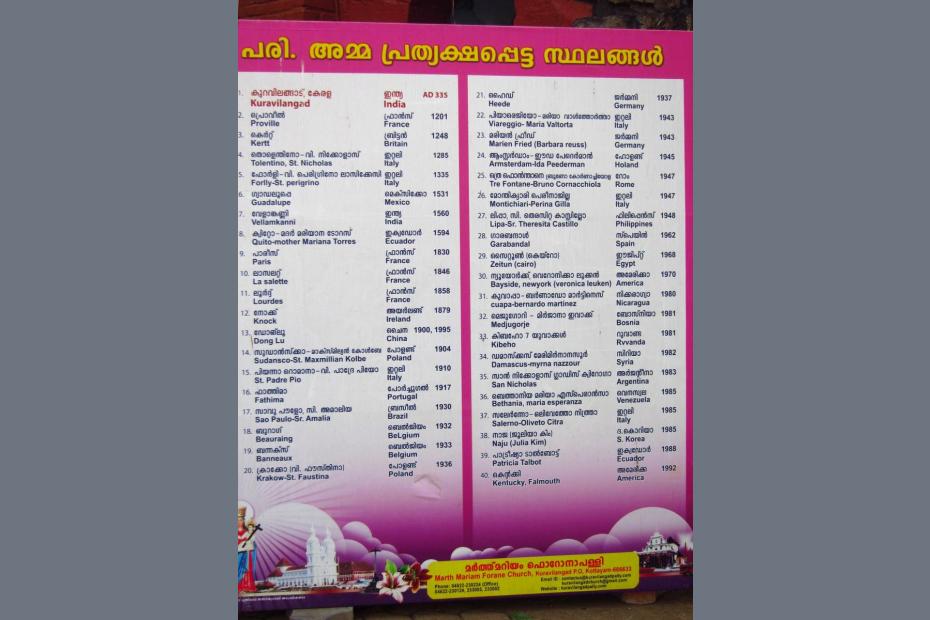
A list of Marian apparitions beginning at Kuravilangad -- some 900 years before the first European apparition -- established the religious importance of the site and the ancientness of Christianity.
-
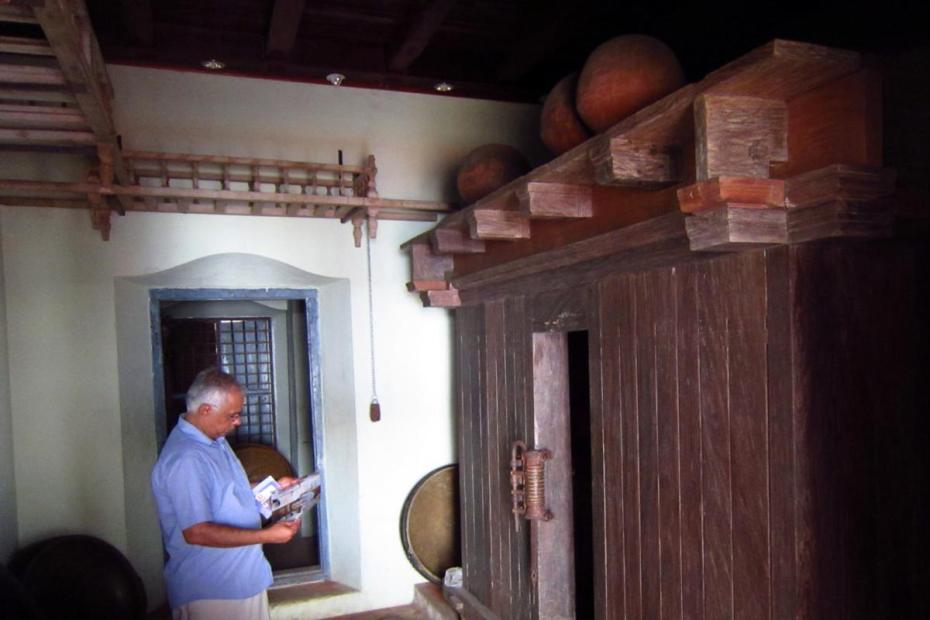
Antique religious and secular items in storage for a planned parish museum connect the church to the history of the town, signaling how Catholic faith is integral, not foreign.
-
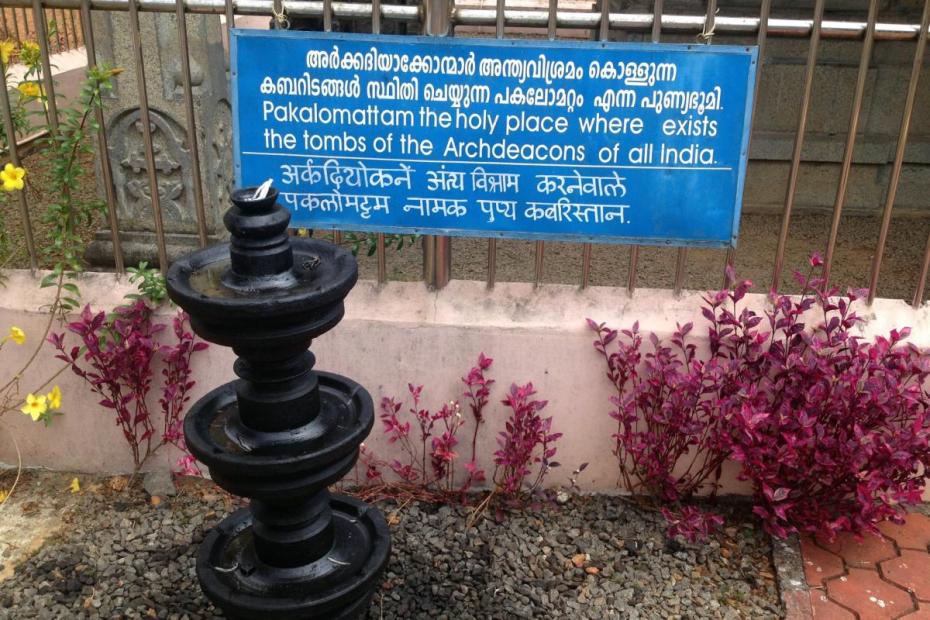
In Kuravilangad, the tombs of the Archdeacons are preserved to link to church to its ancient history predating the Portuguese arrival, a reminder of the indigenous roots of Indian Christianity.
-

A freestanding shrine in the center of Kuravilangad is a spot where passersby will regularly stop to offer a prayer. Large and small shrines of this type are common in Christian areas of Kerala.
-

Street vendors sell oil and candles to bring to the oil lamp at St. Mary's Forane church, Kuravilangad, Kerala.
-
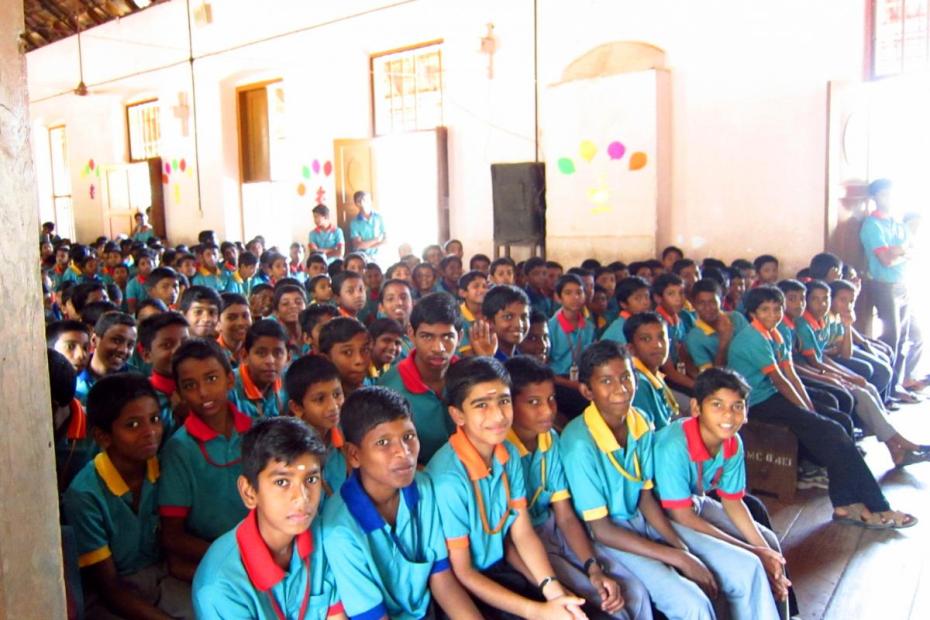
At Kuravilangad, as elsewhere in India, Catholic schools are extremely influential. These boys are attending the parish boys' school. Dr. K. R. Narayanan, 10th president of Republic India, is a graduate.
St. Mary's Forane Church (Marth Mariam Forane Church) claims to date to 105 AD and to be the site of the first Marian apparition in world history, with the appearance of the Virgin Mary to three young boys at a spring in 335 AD. Most of the year, the church functions as a parish church, a site for Masses, for burying the dead and for wedding receptions in an enormous parish hall.
In several important ways, it serves as a reminder of the ancientness of Syro-Malabar Christianity in India, dispelling any sense of foreignness that others might try to give the faith. The appearance of the Virgin in 335 AD, and the printed signs describing it, show that Mother Mary chose to appear there, and make India her own, long before she did so in other lands. The parish is also custodian to the nearby graves of the Archdeacons of the “Thomas” Christians, Indian rulers who largely preceded the Portuguese missionaries’ arrival. The church’s large rectory also houses a small museum of village antiques, again connecting the church to the past.
The parish feast, in January, is an enormous event in honor of St. Sebastian, a popular saint in India, whose devotion was brought by western missionaries.
The Kuravilangad church is also known for its Kappalottam or "racing ship," a commemoration of the biblical story of Jonah and the whale. The event falls during a January three-day fast period in the Syro-Malabar church, known as the Rogation of the Ninevites. The Kappalottam, which takes place during the fast period, is a huge event where local men carry a large, brightly decorated 40-foot ship on their shoulders down the massive stairs from the church, into the streets. They run back and forth with the boat and rock it as if it were being tossed in the seas, so that eventually Jonah falls into the sea. The feast includes elephants, processions, brightly colored umbrellas and music. At the end of the three-day fast, there is feasting and veneration of the cross.






















